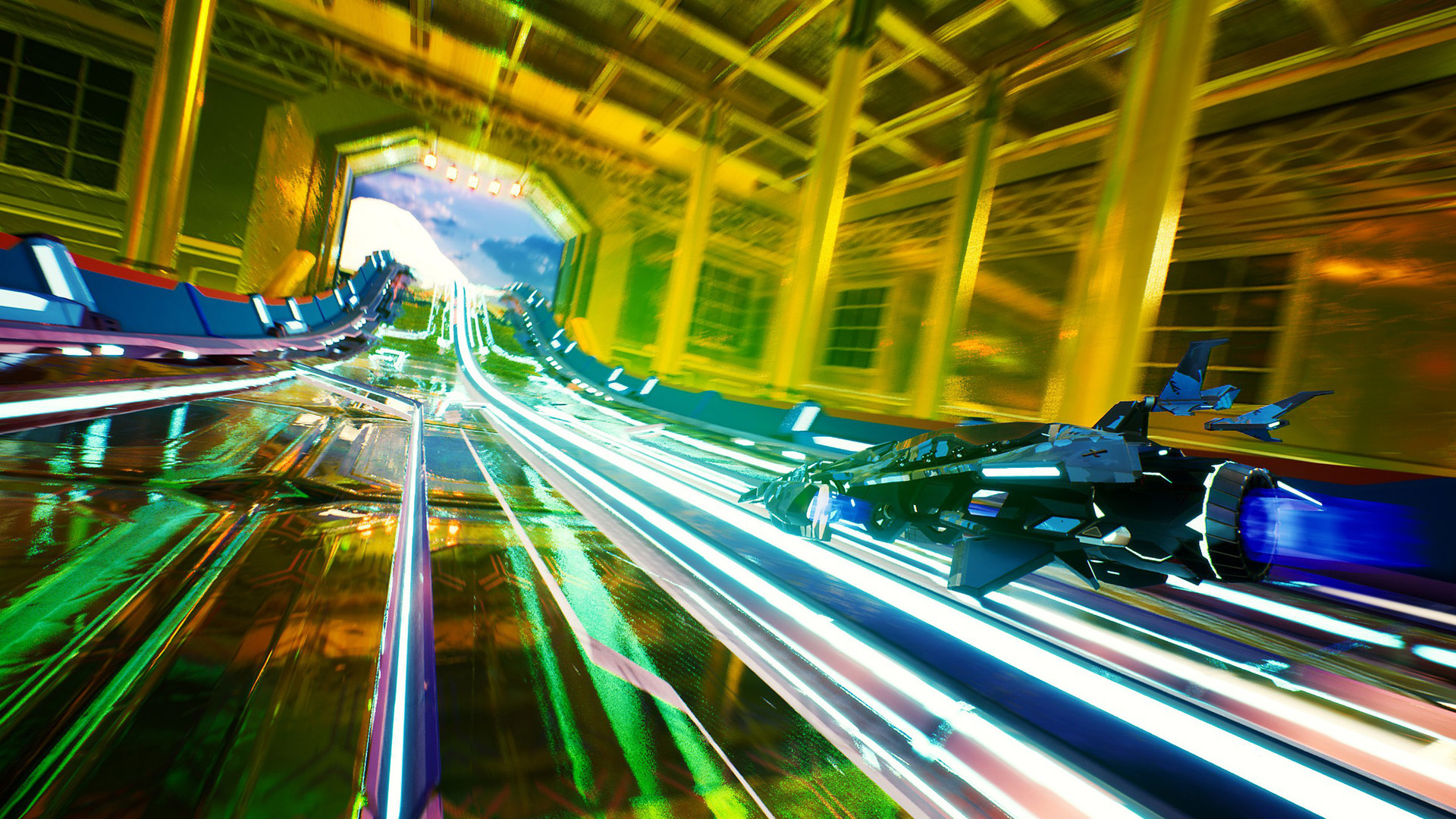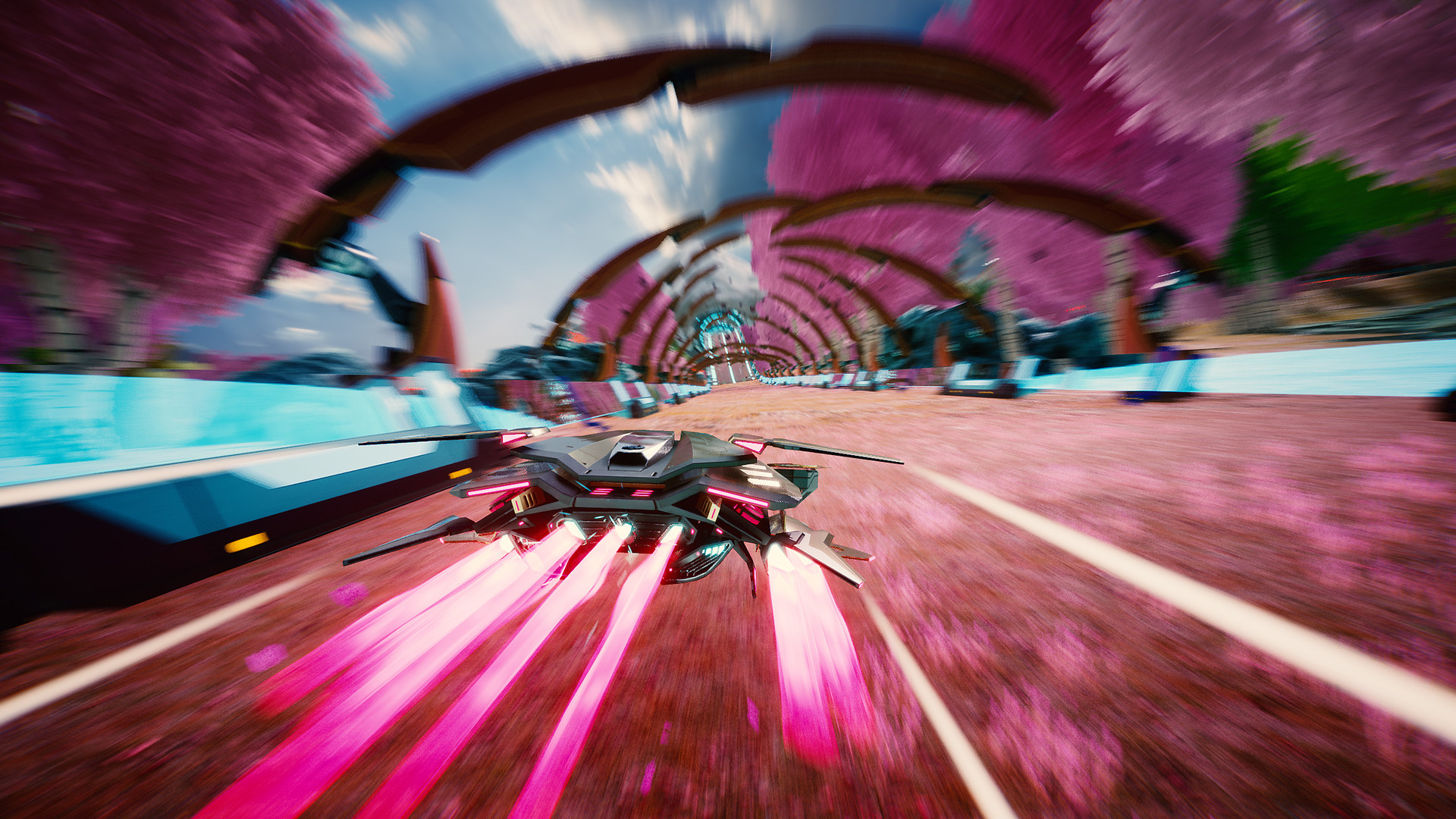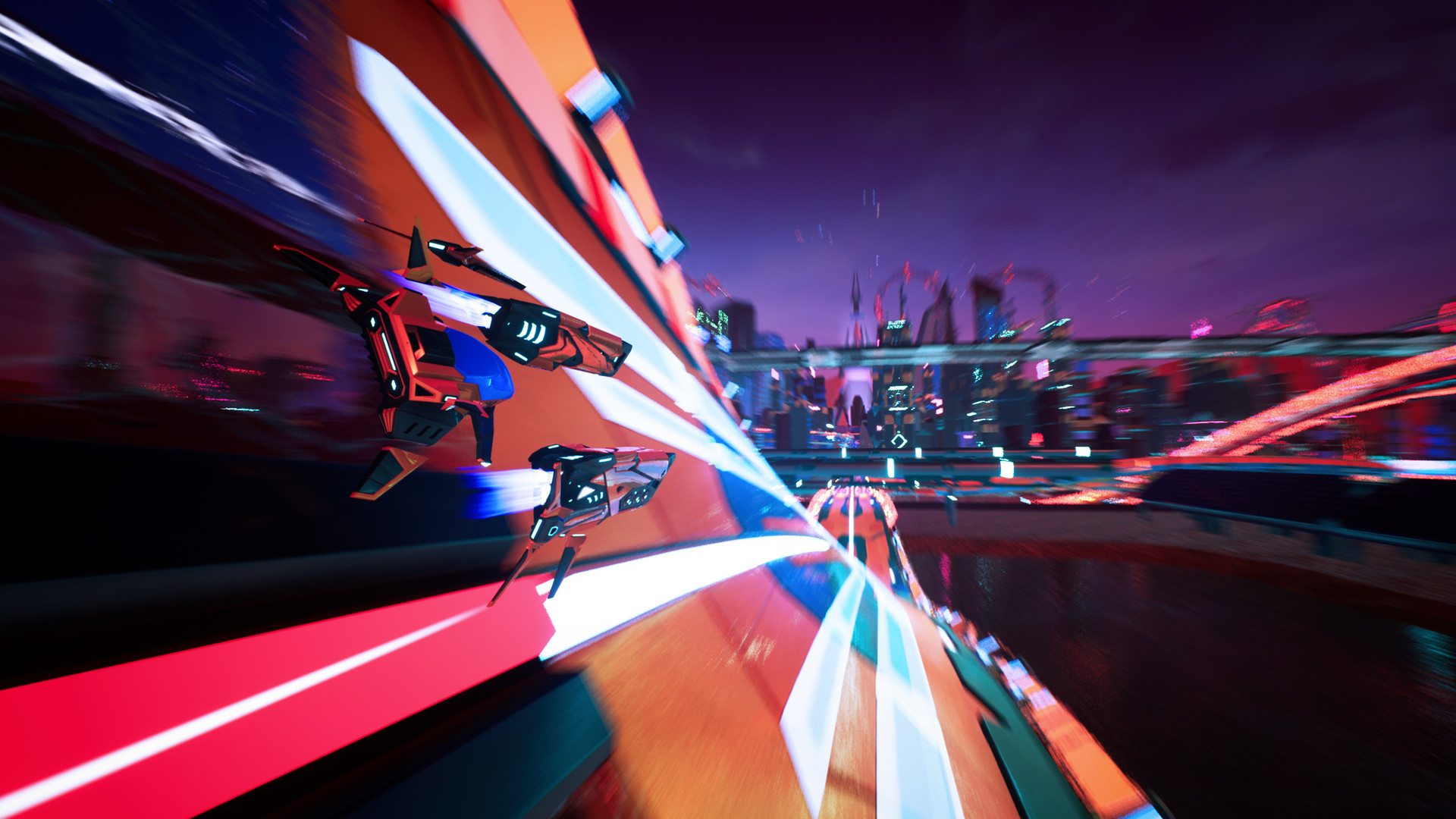
Reviewing arcade racers has become kind of difficult, not only because of the lack of actual arcade racers these days leading to a lack of practice, but also because, when you get down to it, there just isn’t much to talk about when it comes to the genre. Arcade racers don’t really have to do much to be fun. They just have to give you a great sense of speed, have snappy controls, and maybe some fun race tracks.
As a sub-niche of the arcade racing genre, anti-gravity racers haven’t really seen much action from AAA developers in recent times. The closest we’ve seen to a major release has been the WipEout Omega Collection on the PS4, which ultimately was just a remastered repackaging of older WipEout games. Nintendo’s F-Zero franchise might as well be dead at this point considering how little the company’s doing with it. Indie studios have been trying to pick up the slack since then, thankfully, and now we have 34BigThings releasing a sequel to Redout.
"Redout 2 likes to focus on speed. A lot. Even the game’s official descriptions like to call it the fastest racing game in the universe. While that may sound like it’s just marketing, after having played quite a bit of it, I can safely say that there’s definitely a kernel of truth in that bold statement."
Aptly titled Redout 2, the game doesn’t really have much that could be considered revolutionary by any stretch. It achieves its goals of being a fast, fun, and robust anti-gravity arcade racer. Redout 2 likes to focus on speed. A lot. Even the game’s official descriptions like to call it the fastest racing game in the universe. While that may sound like it’s just marketing, after having played quite a bit of it, I can safely say that there’s definitely a kernel of truth in that bold statement.
Before we get to speed, let’s talk about difficulty.
Racing games tend to have strange difficulty curves. A lot of racing games are plagued with ways for AI racers to cheat, like rubber banding. Of course, this means that racing against AI gets quickly boring, and why we see games like Forza Horizon 5 focusing so much more on its multiplayer. But when we have arcade-styled games, realism gets thrown out the window. Cars—or whatever vehicles the game features—aren’t exactly bound by the laws of physics, and difficulty can instead be introduced in more interesting ways.
And that’s precisely what Redout 2 does. While it still features traditional difficulty options when it comes to AI racers, Redout 2’s focus on adding depth and difficulty to its gameplay comes in the form of the impressive level of control you have over your racing car… erm… ship. Sure, steering is simple, and so’s strafing, but Redout 2 also allows you to control the pitch of your vehicle. For example, if you’re coming up on a slope, you might want to pull the nose of your vehicle slightly higher to gain a minor speedboost going up. If you’re going down a slope, pushing your nose lower helps maintain speed and traction. And that’s not even mentioning all of the jumps; Redout 2’s racetracks have more in common with our childhood memories of playing around with Hot Wheels tracks than do with any traditional race tracks.
"While it still features traditional difficulty options when it comes to AI racers, Redout 2’s focus on adding depth and difficulty to its gameplay comes in the form of the impressive level of control you have over your racing car ship."
Now, take all of these control options and insane track design, and throw it into an absurdly fast-paced racing game, and you have what might just end up being one of the more interesting arcade racers out there. All of the vehicles also end up feeling quite weighty, which is great because it actually gives you great visual feedback for when you’ve successfully pulled off a strafing turn.
Speaking of which, actually racing in Redout 2 feels like a balancing act between using as much boost as possible without blowing your vehicle up. Using boosts in Redout 2 is basically limited by how much your vehicle’s overheating. Use enough to overflow the overheat bar and your ship will start taking damage. Take enough damage and you’re permanently out of the race. On the other hand, you have to use boost as much as possible just to make the best times or keep up with the other racers. It ultimately comes down to the fact that, in Redout 2, even your health is a resource that can be used up.
Coming back to AI racers, Redout 2 has a range of difficulty options for single player modes, but I personally found the AI racers to be a bit on the aggressive side even on lower difficulties. While I do hope this gets patched and the lower difficulty AI gets tuned, I don’t really see it as much of a problem since the real fun in Redout 2 is bound to be its time trial mode, and maybe even its online modes.
"All of the vehicles also end up feeling quite weighty, which is great because it actually gives you great visual feedback for when you’ve successfully pulled off a strafing turn."
Alright, game modes. You can’t just be going around race tracks in a circle; you need some variety. Thankfully Redout 2 has a range of game modes that bring some variety in. I personally found the time trial mode to be my favourite purely because it became a test of my own skills. Every single time I went through a time trial, I could feel myself getting better at the game. For those among us who aren’t quite as satisfied with purely intrinsic rewards, however, there’s also a career mode. It features a good mix of race tracks paired with different game modes, and also acts as a great tutorial in its early stages. Unfortunately, there isn’t really much of a story there; you just pick your choice of event and go race. I would have really liked an insane story to go along with the rest of Redout 2’s general insanity.
I will mention that one of the more interesting game modes is Boss mode, which is essentially an endurance-styled massive race where a number of various tracks are linked together to form one massive track. While entertaining, I don’t think those interested in single player racing will find a lot of fun there; it can get rather exhausting. Instead, I think Boss mode will end up being incredibly fun in multiplayer.
Now, all of this emphasis on speed and the insane tracks wouldn’t really make for a very good game if the visuals weren’t up to par, and Redout 2’s visuals are definitely up to par. While it’s not going to set the world on fire with its graphics, Redout 2’s visual direction is strong, mixing its post-cyberpunk aesthetics with the real-world in fun ways. While things are barely visible while your speed throughout the track tends to have 4 digits, what you can see looks gorgeous. Oh, and it certainly helps that the game managed a silky-smooth 60 frames per second on the PS5.
"While it’s not going to set the world on fire with its graphics, Redout 2’s visual direction is strong, mixing its post-cyberpunk aesthetics with the real-world in fun ways."
Redout 2 is in a curious position. It’s a game that’s in a niche sub-genre within a (these days at least) niche genre. Sony and Nintendo clearly don’t seem to care for their zero gravity racers these days, so there has been a rather obvious void. Thankfully, Redout 2 definitely feels ready to fill that void. Its sense of speed is basically unmatched in any other game out right now, and the level of expression of player skill afforded by the in-depth physics and controls in the game are great. Redout 2 almost feels like it’s in the same ballpark as Rocket League when it comes to pulling off advanced techniques. Whether it’ll achieve the critical mass it needs to actually be comparable to Rocket League, however, is another matter entirely. But hey, at least you can rest assured that Redout 2 is a damn fine game.
This game was reviewed on the PlayStation 5.
Great sense of speed; Smooth frame rate; High skill ceiling.
Could be too niche; Might suffer from lack of players in multiplayer down the line.



















